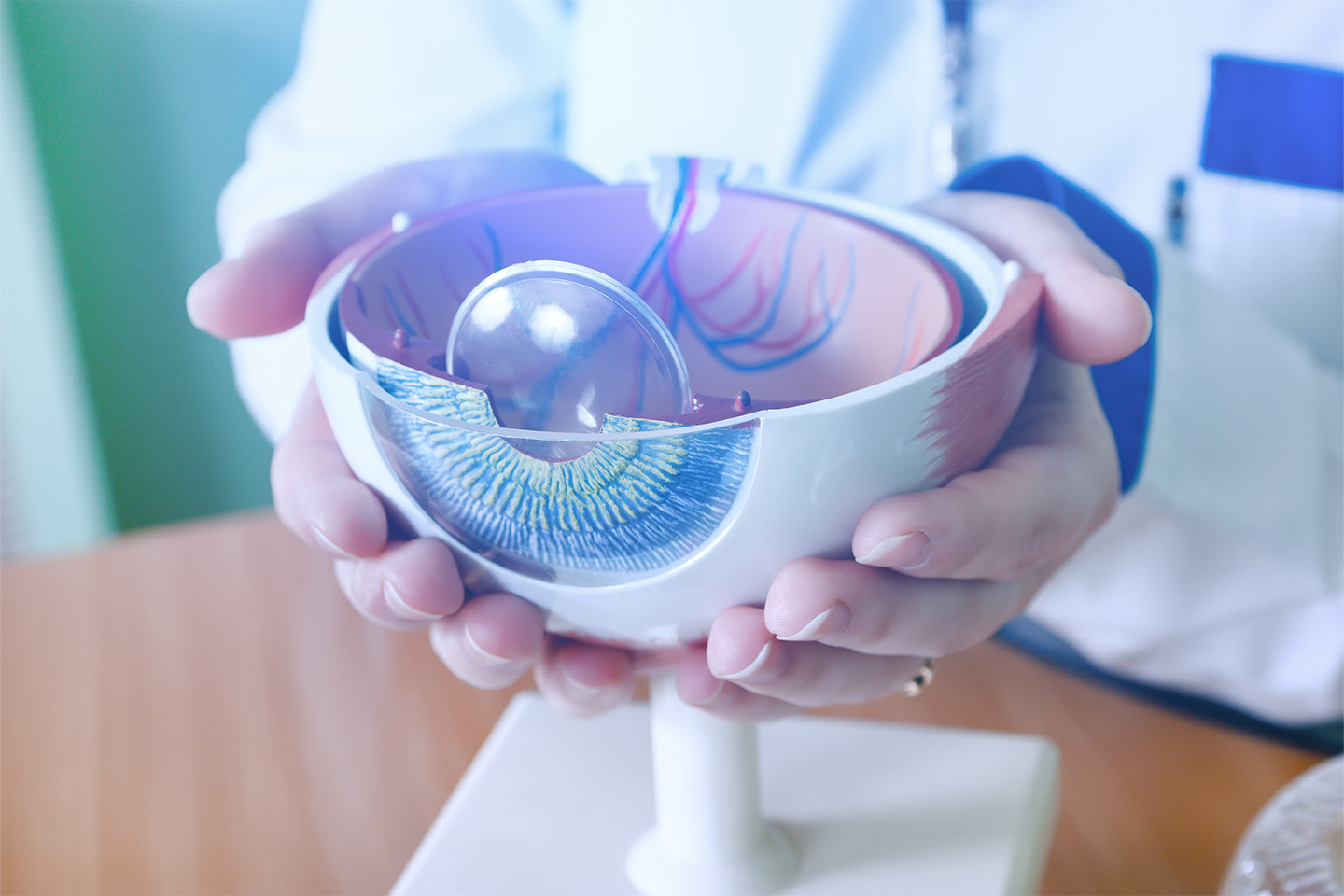10 Commonly Asked Questions About the PanOptix Trifocal Lens

As we age, our vision naturally changes. Maybe you have a newfound need for reading glasses or are experiencing cloudy lenses. The freedom of renewed sight drives many cataract patients to have the procedure. The ability to see correctly impacts our lives every day. Are you considering the PanOptix Trifocal lens for your cataract surgery? The PanOptix Trifocal lens is an innovative multifocal lens based on the AcrySof IQ IOL used in over 120 million eyes around the world. PanOptix was approved by the US FDA in 2019.
1. What is PanOptix lens?
As your top choice for cataract surgery in Dallas, we offer the PanOptix Trifocal intraocular lens (IOL) to replace the clouded natural lens removed during surgery. With three focal distances, the PanOptix Trifocal lens provides clear vision over a greater range than standard monofocal cataract replacement lenses. It provides patients with distance vision, intermediate vision, and near vision.
2. How do Trifocal intraocular lenses work?
These acrylic lenses replace your clouded natural lens during cataract surgery, using 26 diffractive rings to provide better near, intermediate, and distance vision rather than the single-distance correction that monofocal lenses provide. This brings you closer to the natural range of vision that most people are used to over their lives, reducing or eliminating the need for glasses as well. PanOptix Trifocal IOLs can correct astigmatism, an important vision concern for many people.
3. What are the pros and cons of multifocal intraocular lenses?
Multifocal IOLs provide a great range of vision, but not quite everything natural sight can provide. There may be a few visual artifacts such as halos, glare, and night vision in a small percentage of patients. On the plus side, they provide a range of clear vision that’s great for active lifestyles. Patients have less reliance on glasses except for special cases such as seeing small details up close (such as needing to thread a needle), and long-lasting vision correction that doesn’t require the cost and upkeep of glasses and contacts.
4. Which lens is better, monofocal IOL or multifocal?
Cost and personal preference make the choice an individual one. All lens choices can provide improved vision, but the choice depends on whether the patient wants to be free of glasses or contacts. Working with your eye doctor, you can choose monofocal lenses for near vision if your lifestyle suggests it and use glasses for distance vision. Conversely, you can choose to have your distance vision corrected and then only use glasses for reading. If patients have worn monovision contacts in the past and adapted well to them (one eye corrected for distance and one eye corrected for near), monovision vision correction can be achieved with monofocal lenses as well. With multifocal lenses such as the PanOptix, the multiple focal zones provide the maximum range of vision without the help of additional glasses or contacts.
5. How long does it take to get used to multifocal lens implants?
Most cataract surgery patients can see well soon after their operation. Most of the healing occurs during the first week and takes up until about a month for the vision to stabilize. With multifocal lenses, the process for the vision to become clear can take longer as the patient’s brain also must get used to dealing with the new characteristics of vision, like bifocal and trifocal lenses in glasses. Over the next nine to twelve months, the visual cortex will adapt, learning to use the new way that the eye focuses. However, most patients adapt within the first few months after surgery.
6. What is the best lens replacement for cataract surgery?
Monofocal lenses are suited for a more fixed lifestyle such as desk work and reading or outdoor activities, while multifocal lenses provide more versatility for cataract surgery patients. Accommodating IOLs have been introduced to the market, but multifocal lenses offer the best vision for many patients.
7. Do you still need to wear glasses after cataract surgery?
For monofocal lenses, eyeglasses will generally be required after surgery for either near or far vision, depending on the lens prescription. With multifocal IOLs, there may still be a few situations such as reading under dim lighting or driving at night where the clearest vision is obtained by wearing glasses.
8. Does PanOptix lenses correct astigmatism?
PanOptix Trifocal Toric IOLs include correction for astigmatism. Ask your eye doctor if that’s the best astigmatism correction for you after cataract surgery, as there are other possible solutions.
9. How long does the PanOptix lens last?
The durable PanOptix Trifocal lens is designed to last a lifetime in most patients. Replacement of the lens is only performed in rare situations.
10. Will cataract surgery give you 20/20 vision?
An outcome of 20/20 vision is quite possible if accurate measurements are taken and there are no other eye health issues present in the eyes. Using multifocal lenses, you may have 20/20 vision without glasses over an extended range, or with monofocal lenses 20/20 over a limited range without glasses.
For Premium Vision Care, LASIK, and Cataract Surgery in Dallas, Turn to Kleiman Evangelista
One important reason for choosing Kleiman Evangelista for cataract surgery in Dallas is that our top eye doctors spend time making sure that any existing concerns such as ocular surface issues, eye disease, or significant refractive issues such as astigmatism are addressed before your cataract surgery for best results. Call us for information and the best eye care in Dallas.
[DISPLAY_ULTIMATE_SOCIAL_ICONS]









